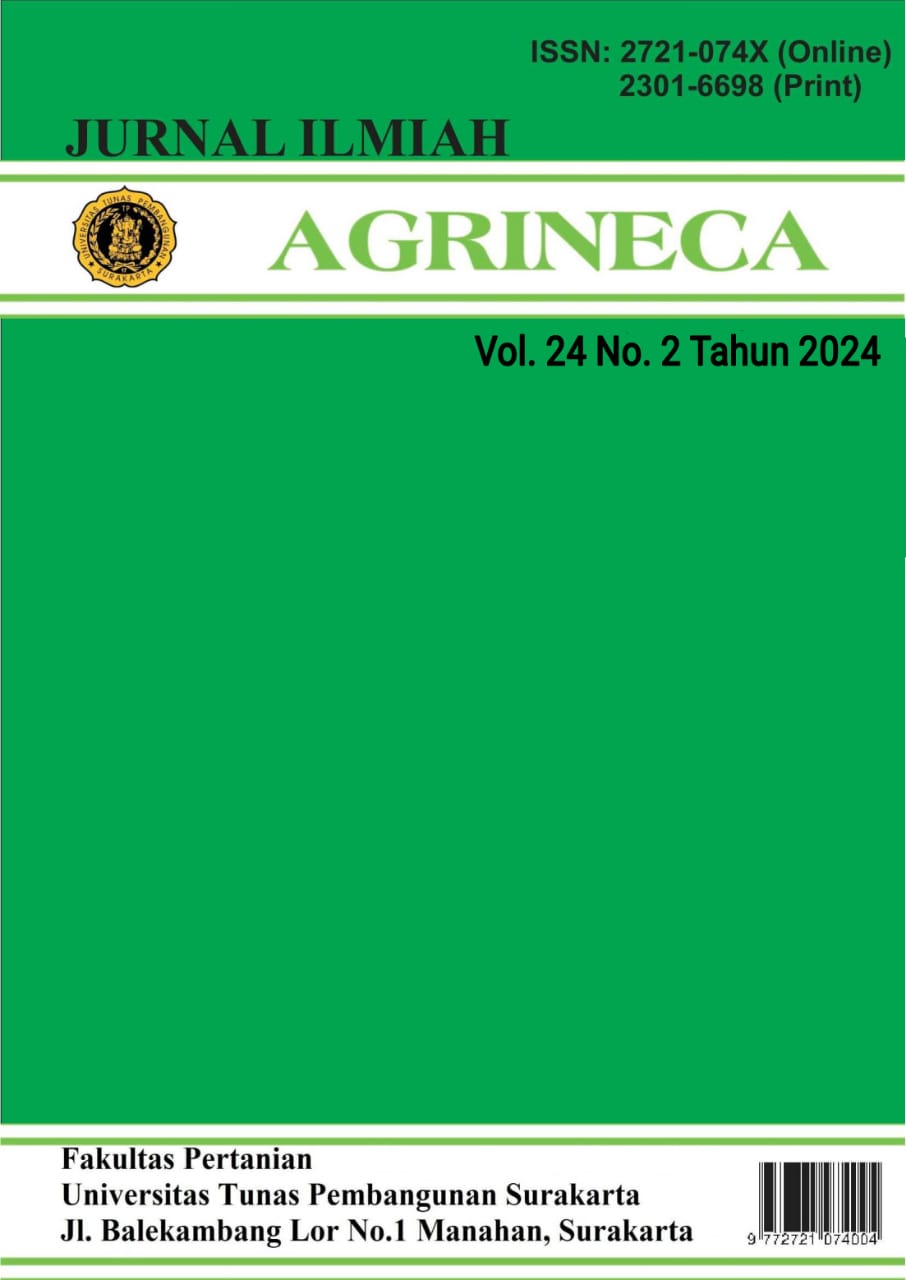Pengaruh Dosis Phospor Dan Pupuk Cair Pada Tanaman Bunga Kol (Brassica Oleracea Var. Botrytis L)
Abstract
Cauliflower is a vegetable that has commercial value and excellent prospects for public consumption. According to the Central Statistics Agency of the Republic of Indonesia, cauliflower production has decreased from 2019 to 2021, therefore it is necessary to improve maintenance, one of which is by providing Phosphorus fertilizer to increase productivity. This will increase the rate of photosynthesis to produce high productivity and the correct dose of liquid organic fertilizer (POC) to maximize growth in the vegetative and generative phases thereby increasing the yield of cauliflower plants. This research aims to determine the effect of giving various doses of Phosphorus and POC fertilizers on the growth and yield of cauliflower plants. The research was carried out in the village, Girilayu, Matesih, Karanganyar from February to May 2024. Using the Complete Randomized Block Design (RAKL) method consisting of 2 treatment factors and 3 replications. The first factor is the dosage of Phosphorus (P) fertilizer P1: 100 kg/ha, P2: 150 kg/ha, P3: 200 kg/ha. The second factor is the dose of POC (C), C1: 4 cc/L, C2: 8 cc/L, C3: 12 cc/L. The results research showed (1) Giving various doses of Phospor fertilizer had a very real effect on fresh stover, dry stover, plant diameter, plant weight per plant, and crop weight per plot. However, it does not have a real effect on plant height and number of leaves. (2) Giving various doses of POC had a very real influence on fresh stover, dry stover, plant diameter, and plant weight per plant had a real influence on crop weight per plot and had no real influence on plant height and number of leaves. (3) The interaction between treatments had a very real influence on fresh stover, dry stover, and plant weight per plant, and had no real influence on plant height, number of leaves, plant diameter, and weight per plant plot. (4) The highest results were obtained in the branch pruning treatment 3 weeks after planting with an NPK fertilizer dose of 200 kg/ha, namely a plant weight of 11,997.4 grams per plot (26,644 kg/ha).

